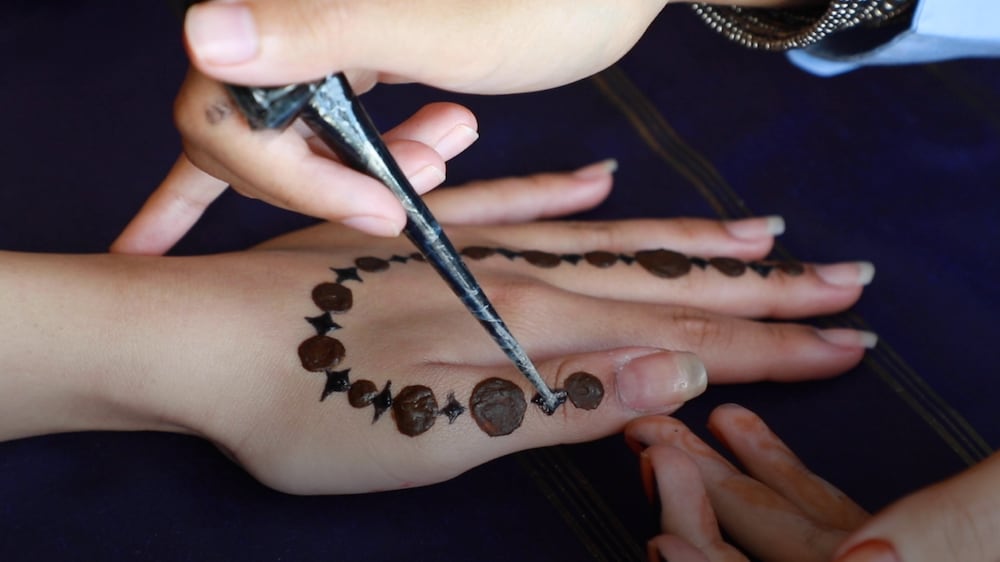Ruqaiyyah Patel carefully layers on henna, adding more of the brown dye to the already darkening outline she’s created on her client’s hand.
Henna art wasn’t always on Patel’s mind but, these days, she is gaining attention on social media for her contemporary take on the age-old tradition.
Henna, or mehndi, as it is called in Hindi and Urdu, has been used throughout South Asia, Africa and the Middle East since around 800 AD. It is a decorative way for women to adorn themselves especially for special occasions such as weddings or for Eid. The temporary dye comes from the crushed leaves of a henna tree to produce a powder which is then mixed with water and lemon juice to create a thick paste that stains the skin.
“So many people, they see henna and they're thinking older generation or they're thinking about the most popular designs now, which is very bridal, but lots of floral designs. And that's kind of as much as they know about henna overall,” Patel tells The National.
During the pandemic Patel decided to buy herself a henna kit for Eid as something fun to do. However, over the past year and a half, it started to become a passion as Patel dedicated more and more time to the art.
She says she’s inspired by Azra Khamissa, a Dubai chiropractor and founder of handbag brand Azra, who has amassed more than 167,000 followers on Instagram with her unique and modern take on henna art. Patel, who is a student at the London College of Fashion, is appreciative of the support she has received, but believe henna artists do not get enough credit in general for the work they do.
“Because it's cultural, I feel like people are sort of stuck in this mindset that, 'Oh, this is just something we do at home, it's just a family thing that we do.' But I think it's nice to see people recognise it for the art is,” she says. “A lot of henna artists haven't gotten their dues. It's hard work, especially if they're doing bridal henna, that's a full day of work where they're just focusing on one person and it has to be perfect. I think it's nice to see people respond to it so nicely.”
While she has been praised for her contemporary take, Patel says she isn't doing anything that hasn't been done before and claims to find inspiration from the past.
“For me, because I started exploring traditions of henna a lot further back like Mughal Empire times, North African designs, Middle Eastern designs – really just fleshing out the history of henna as a practice. I discovered so many beautiful patterns that just hadn’t been used more recently,” she says.
“I think it's been fascinating how people are like, ‘Oh, your designs are so modern’. And I'm like, ‘It's not that modern’, I'm taking inspiration from historical designs.”
Although Patel is happy at the reaction her henna skills have received, she's more excited to know that general interest is rising and hopes to bring more awareness as the art form grows.
“The reception has been really lovely. I think a lot of people were looking for ways to connect with cultural arts in a way that suits their style. So for some people, my style of henna suits them, for some people, they prefer to go the floral route, they prefer to go to the bridal route.
“There's so many different styles now, which I feel will grow more and more as people get interested in it.”






